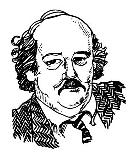(Syndicated to Kansas newspapers Aug. 17, 2014)
 Kansans are two weeks away from learning whether the key to the $384 million in tax increases passed by the legislature this year fix the budget problem for the state.
Kansans are two weeks away from learning whether the key to the $384 million in tax increases passed by the legislature this year fix the budget problem for the state.
That key is the amount of revenue that the boost from 6.15% to 6.5% in sales taxes raises. The sales tax is the key to the tax hikes, because it raises the most money, and it is the most unpredictable tax source that was increased.
Without a strong showing in the first month in which those higher rates are going to be fully accounted for—to be revealed Sept. 1 in the Kansas Department of Revenue tax-collection report for August—lawmakers and the administration won’t know whether the two-year budget adopted this spring is going to work.
Other items in the massive tax package remain questionable.
It won’t be known until spring whether some corporations are canny enough to recast what are called “guaranteed payments” into something else to avoid $23 million in new income taxes on those payments, often to corporate partners and such.
And, it will be October before we learn whether a tax amnesty program which is designed to spur payments—minus penalties and interest—on taxes owed before Dec. 31, 2013, raise the $30 million that similar amnesties have yielded in previous years. That amnesty is questioned by many, but the concept—pay up without penalties—has an allure that may spur some delinquents to take advantage of the program during the Sept. 1-Oct. 15 filing period.
The rest of that tax package that isn’t a big worry? Well, diligent smokers are expected to cough up an additional 50 cents a pack (from 79 cents a pack to $1.29 a pack, expected to raise $40 million) without much complaint. After all, they didn’t quit puffing when five years ago they were sent outdoors to smoke.
Eliminating most itemized income tax deductions and dropping to 50 percent the tax-deduction of mortgage interest and property taxes constitute, well, an income tax that will show up next spring, and for forward-looking taxpayers, be hard-wired into their tax withholding in the next few months.
So it is the $164 million that the sales tax increase is expected to raise this fiscal year that is the real question.
Many states saw flat or dropping sales tax revenues in July, including Kansas—complicated here by the fact that the increased sales tax hadn’t been fully reflected for the entire month. So it’s going to be Sept. 1 when we learn whether Kansans are spending or not.
Opponents of the sales tax boost—which includes everything, including food—called the measure punishing to those with low incomes who spend a higher percentage of their income on food than on Buicks or vacations or redecorating their homes.
The concept is that there will be less spent on other taxable items because of the sales tax on food, or that Kansans will spend that money on rent or house payments or paying off debts or nearly anything else that doesn’t require paying sales tax.
And…we’ll find out Sept. 1.
If the news is good—that’s for the state, not for us folks who buy things and pay sales tax—the upcoming Legislature may not have to boost taxes again next session just before we vote whether to reelect all 125 House members and 40 senators.
If the news is bad on sales tax, well, then it’s another session of paring spending, of cutting programs, of finding other little things to do to raise money for the state—like boosting filing fees and registrations and such that we don’t all notice, which raises money that can be scooched from some obscure agencies back into the State General Fund.
We’ll have our first indication Sept. 1.
